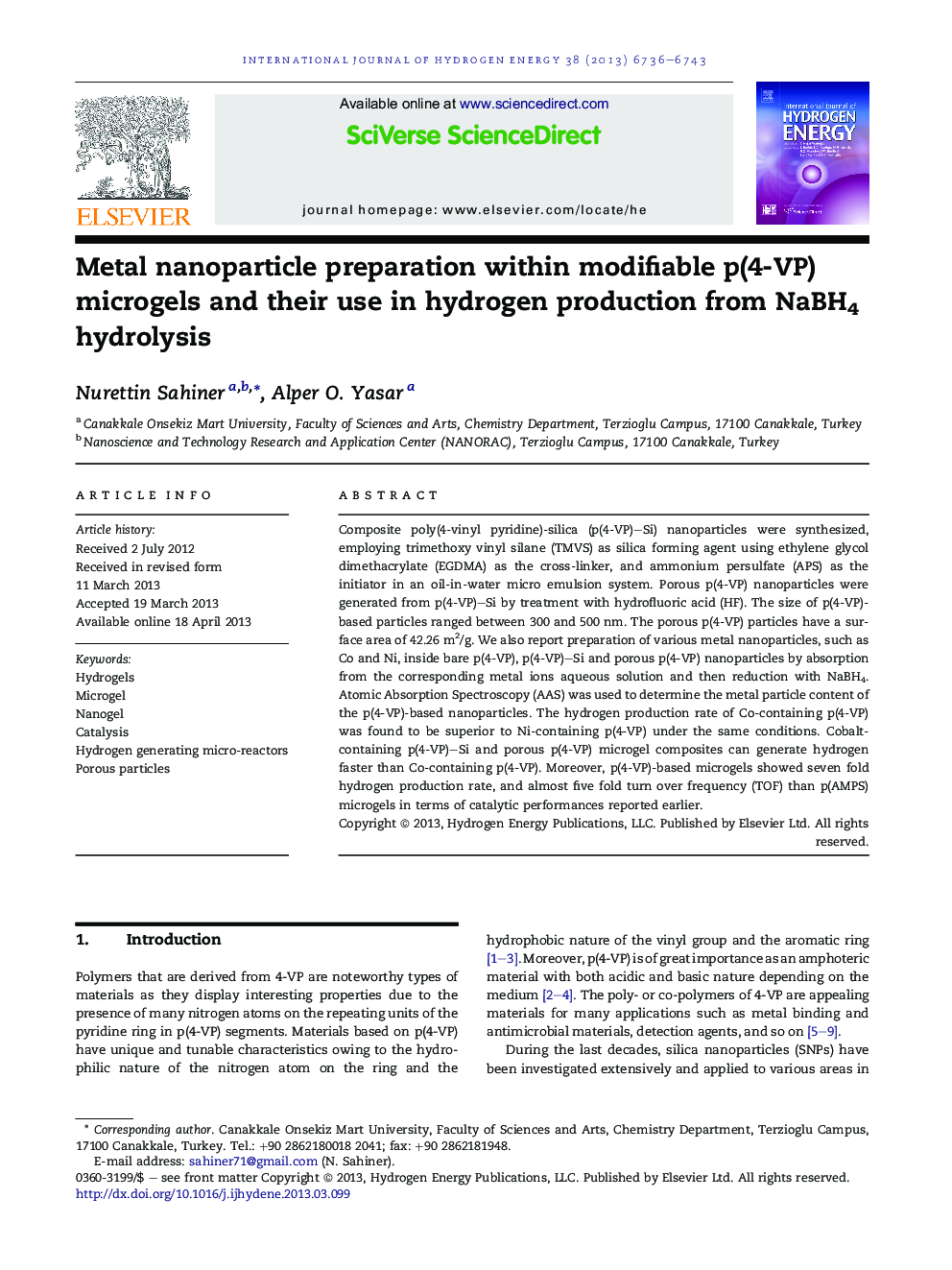| Article ID | Journal | Published Year | Pages | File Type |
|---|---|---|---|---|
| 1281595 | International Journal of Hydrogen Energy | 2013 | 8 Pages |
•Polymeric microgels as template sand reactors.•Modifiable p(4-VP) microgel catalysts for hydrogen generation.•NaBH4 hydrolysis via p(4-VP)–Co and p(4-VP)–Ni composites.
Composite poly(4-vinyl pyridine)-silica (p(4-VP)–Si) nanoparticles were synthesized, employing trimethoxy vinyl silane (TMVS) as silica forming agent using ethylene glycol dimethacrylate (EGDMA) as the cross-linker, and ammonium persulfate (APS) as the initiator in an oil-in-water micro emulsion system. Porous p(4-VP) nanoparticles were generated from p(4-VP)–Si by treatment with hydrofluoric acid (HF). The size of p(4-VP)-based particles ranged between 300 and 500 nm. The porous p(4-VP) particles have a surface area of 42.26 m2/g. We also report preparation of various metal nanoparticles, such as Co and Ni, inside bare p(4-VP), p(4-VP)–Si and porous p(4-VP) nanoparticles by absorption from the corresponding metal ions aqueous solution and then reduction with NaBH4. Atomic Absorption Spectroscopy (AAS) was used to determine the metal particle content of the p(4-VP)-based nanoparticles. The hydrogen production rate of Co-containing p(4-VP) was found to be superior to Ni-containing p(4-VP) under the same conditions. Cobalt-containing p(4-VP)–Si and porous p(4-VP) microgel composites can generate hydrogen faster than Co-containing p(4-VP). Moreover, p(4-VP)-based microgels showed seven fold hydrogen production rate, and almost five fold turn over frequency (TOF) than p(AMPS) microgels in terms of catalytic performances reported earlier.
Graphical abstractFigure optionsDownload full-size imageDownload as PowerPoint slide
